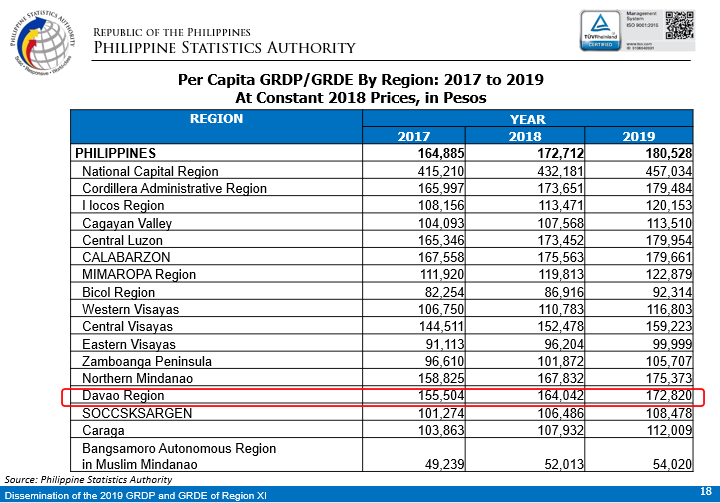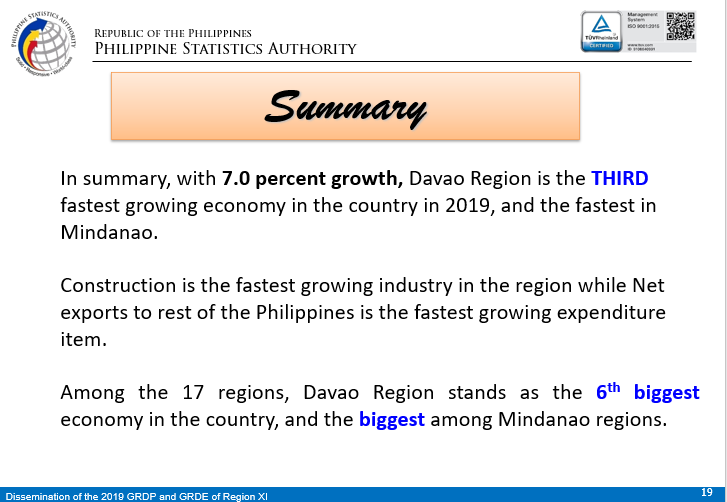2019 Gross Regional Domestic Product
2019 Gross Regional Domestic Product
↵In 2019, the economy of Davao Region expanded by 7.0 percent, when compared from the 841.4 BILLION PESOS in 2018. It increased by 59 billion pesos reaching 900.4 BILLION PESOS in 2019.

The main drivers for growth in 2019 for the economy of Davao Region are Wholesale and retail trade; repair of motor vehicles and motorcycles with 12.0 percent; Construction with 26.6 percent; and Financial and insurance activities with 13.1 percent.
(Note: The figures are ranked based on contribution to growth.)
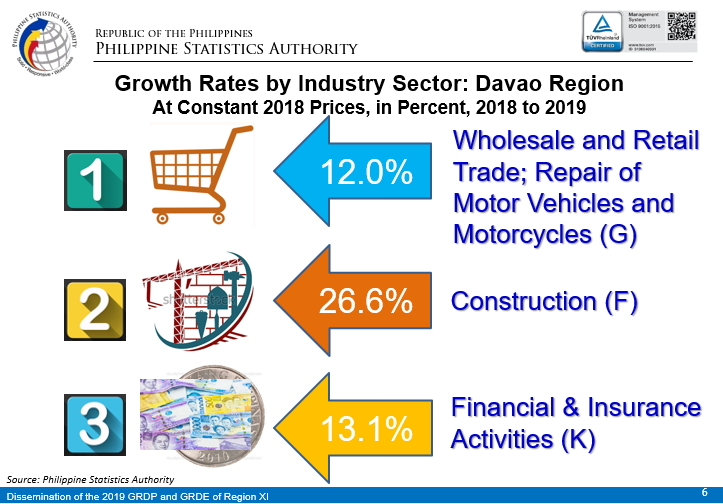
Other industries that posted positive growths in 2019 were: public administration and defense with 9.8 percent; accommodation and food service activities with 8.7 percent; electricity, steam, water and waste management with 8.4 percent; human health and social work activities with 5.6 percent; education with 3.4 percent; professional and business services with 2.8 percent; and communication with 2.1 percent.
While the industries not performing well in the period were Agriculture, Forestry and Fishing (-3.6%); Mining and Quarrying (-2.8%); and Manufacturing (-2.3%).
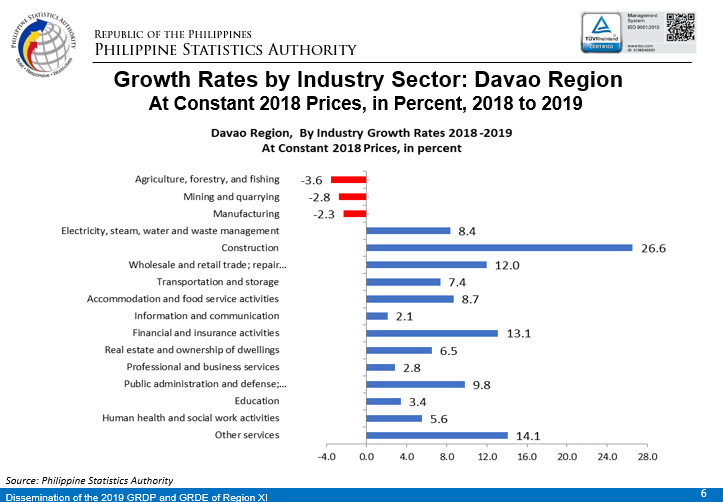
Out of the region’s total Services, Trade and Repair accounted for 22.6 percent. Financial and insurance activities accounted for 6.0 percent; Real Estate and ownership of dwellings, 5.0 percent; Transportation and storage, 4.9 percent; Professional and business services, 4.4 percent; Education, 3.9 percent; Public Administration & Defense, 3.0 percent; Human health and social work activities, 2.8 percent; Information and communication, 2.2 percent; Accommodation and food service activities, 2.0 percent; and other services, 1.6 percent.
Meanwhile, Industry Sector shared 26.1 percent to the total economy of the region. Construction and Manufacturing accounted for 11.3 percent each of the region’s Industry output; Electricity, Steam, Water and Waste Management, 2.7 percent; and Mining and Quarrying, 0.8 percent.
Agriculture, forestry and fishing, on the other hand, shared the least to the total economy of Region XI with 15.5 percent share.
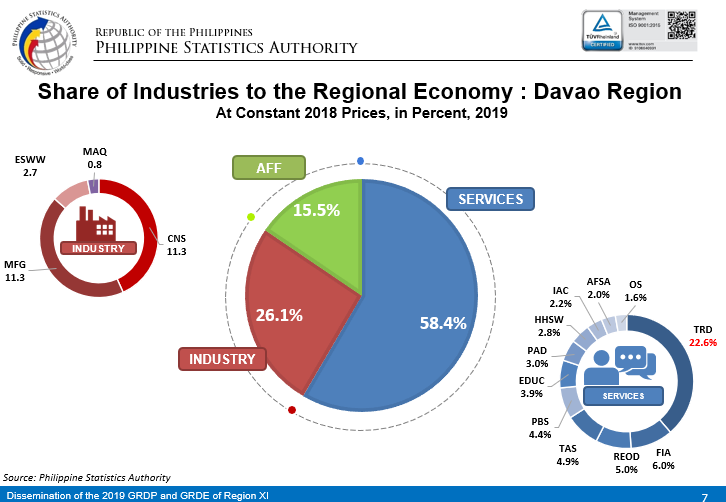
Of the three (3) large economic Industries, Services contributed the most to the region’s economic growth in 2019 with 5.2 percentage points. Industry contributed 2.4 percentage points, while Agriculture pulled down the overall growth by 0.6 percentage point.
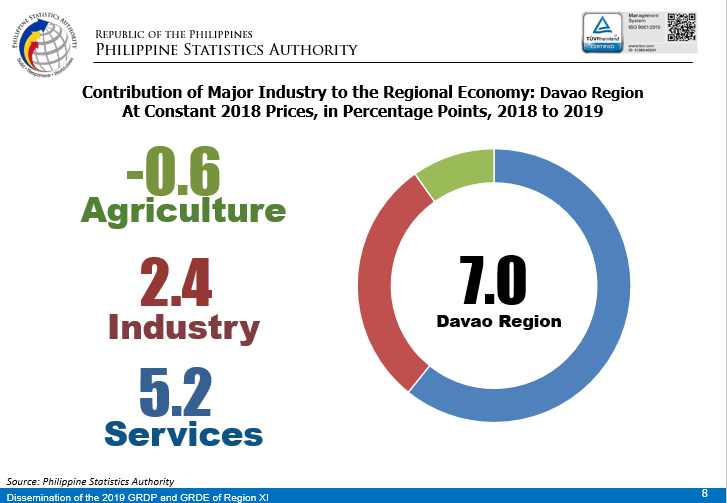
Per capita GRDP/GRDE is the total GRDP/GRDE levels divided by the total population to construe how much each individual contributes to the regional economy.
The per capita GRDP/GRDE of Davao region stood at 172,820 pesos in 2019, an increase of 5.4 percent it registered in the previous year.
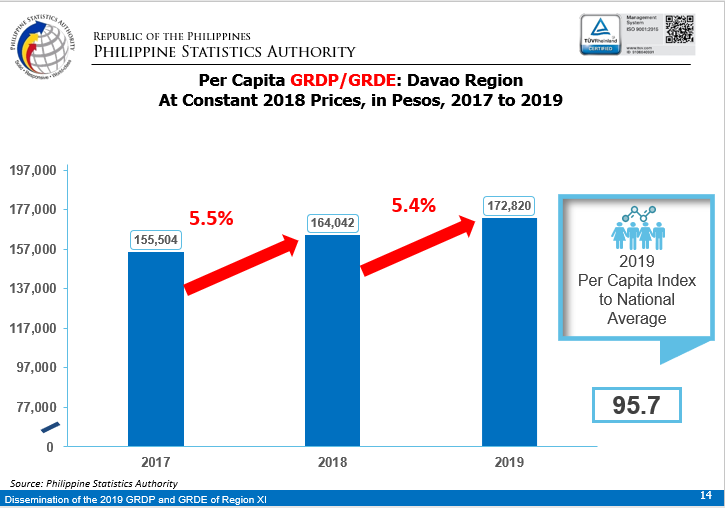
2019 Performance of Davao Region vis-à-vis Other Regions
All the regions posted positive growth rates.
Bicol Region posted the highest growth at 7.4 percent, followed by NCR with 7.2 percent growth. Davao Region ranked THIRD with the fastest growth at 7.0 percent.
Six (6) out of 17 regions, including Davao Region, posted higher growth rates than the national growth rate of 6.0 percent in 2019.
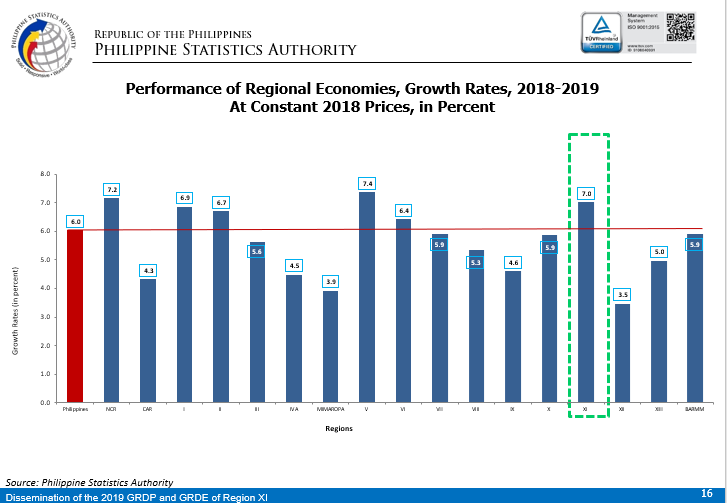
Examining the structure of the Regional Economies, Region IV-A (CALABARZON) is the only region that is predominantly industrial in 2019, while the rest of the regions, including Davao Region, are predominantly services-based economies.
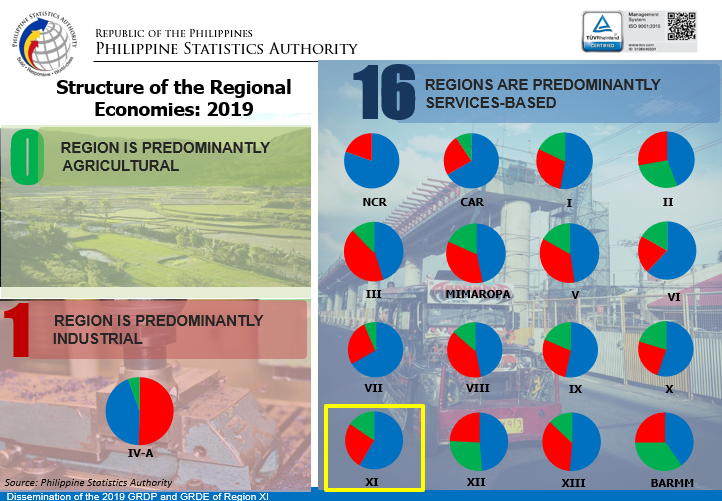
Among the 17 regions, NCR posted the highest per capita GRDP/GRDE of P457,034, followed by Region III (Central Luzon) at P179,954.
Davao Region ranked 6th among the 17 regions with highest per capita GRDP/GRDE at P172,820.
